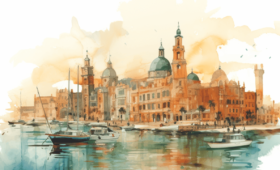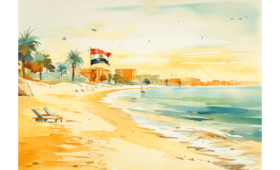Egypt, the cradle of civilization, beckons travelers with its rich tapestry of history, culture, and unending mystery. While globally celebrated for its majestic pyramids, mighty Sphinx, and the storied Nile, another side to this historic land is its mystical deserts. These sprawling landscapes, with their golden dunes, star-lit skies, and time-honored oases, offer visitors a gateway into the country’s heart and soul far beyond the iconic relics of its Pharaonic past.
For adventurers, the allure of Egyptian desert safaris is undeniable. These journeys are not just about the adrenaline rush of dune bashing, quad biking, or sandboarding; they’re about immersive experiences. From the surreal white rock formations in the White Desert to the vast, whispering expanse of the Great Sand Sea, every desert trip is a venture through time. Nighttime brings its own magic, with the stark, unspoiled beauty of the starry skies and the opportunity to enjoy traditional Bedouin hospitality.
Let’s see what the Top 5 Desert Safari Sites in Egypt have to offer to adventurers.
White Desert and Bahariya Oasis Tour
Embark on a journey of astonishing contrasts with the White Desert and Bahariya Oasis Tour. This adventure, set in the heart of Egypt’s Western Desert, presents a world where surreal beauty meets lush tranquility. Here, the White Desert awaits, a marvel of nature with its chalk-white rock formations sculpted by the harsh desert winds into spectacular shapes that defy imagination. As the sun sets, these formations take on the golden hues of the desert, creating a scene of unparalleled natural artistry.
But the wonders don’t end there. When you think the desert might have shared all its secrets, the Bahariya Oasis emerges like a mirage. This verdant haven, nestled amid the endless dunes, offers respite with its shade-giving palms, healing hot springs, and rich cultural heritage. It’s a testament to life’s resilience amidst the most arid landscapes and a reminder of the ancient caravans that once sought rest in its nurturing embrace.

This tour isn’t just a passage through geographic marvels; it’s a journey through the very essence of time — where the silent narratives of the rocks meet the whispered legends of the oasis dwellers. Prepare for a visual and spiritual feast that will linger long in your memory.
On this Tour:
Witness the surreal rock formations of the White Desert
Stepping into the White Desert feels like entering a painter’s surreal dreamscape. The rock formations, carved by the hands of time and weather, rise from the powdery, white sand in shapes that defy logic — some delicate, others imposing. As the sun journeys across the sky, the play of light and shadow on these formations stirs the imagination, each hour revealing a new facet of their beauty.
But it’s the golden hour that truly captivates; the setting sun bathes everything in a warm glow, with the rocks assuming hues of orange and pink, so vibrant and perfect that you’ll question reality. Don’t forget your camera; the photo opportunities are once-in-a-lifetime, though the images will hardly do justice to the memories you’ll store in your heart.
Explore the Bahariya Oasis with its palm groves and hot springs.
A jewel nestled in the vastness of the desert, Bahariya Oasis is a haven of greenery and peace that starkly contrasts the endless dunes surrounding it. As you enter this sanctuary, you’re greeted by dense palm groves, their leaves rustling softly in the breeze, providing much-needed shade and a sense of tranquility that feels centuries away from the hustle and bustle of modern life.
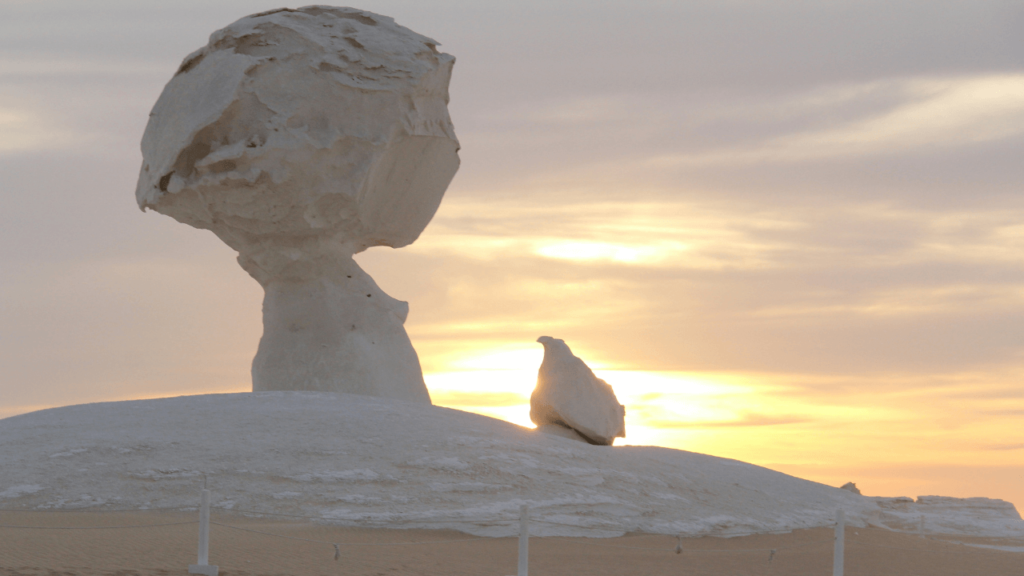
Wandering through the groves, you’ll find yourself drawn to the allure of the hot springs. Renowned for their therapeutic properties, these natural pools invite you to take a momentary respite from your travels. As you soak in the warm, mineral-rich waters, you can feel the weariness of the journey ebbing away, replaced by a rejuvenating energy that seems to seep from the very ground beneath you.
While Bahariya may be an oasis of physical relaxation, it’s also rich in cultural heritage. Take the time to engage with residents who preserve the customs and stories of a long past. Their warm hospitality is a reminder that the oasis is not just a place of natural beauty but a living, breathing community.
For travelers, Bahariya is a gentle reminder of life’s simple pleasures — a quiet walk under the shade of palms, the restorative embrace of warm waters, and the timeless stories shared under a starlit sky. As you explore, remember to respect the local customs and environment that make this oasis the treasure that it is.
Visit the Black Desert and the Crystal Mountain
The adventure intensifies as you approach the Black Desert, a stark, haunting expanse where black volcanic hills and rocks scatter across the orange sands like remnants of a forgotten era. The landscape here is a testament to the Earth’s fiery geological past, starkly contrasting the White Desert’s serene beauty. Climbing one of these dark peaks rewards travelers with a panoramic view of the desert’s vastness, a sight that underscores the immense scale of our natural world.
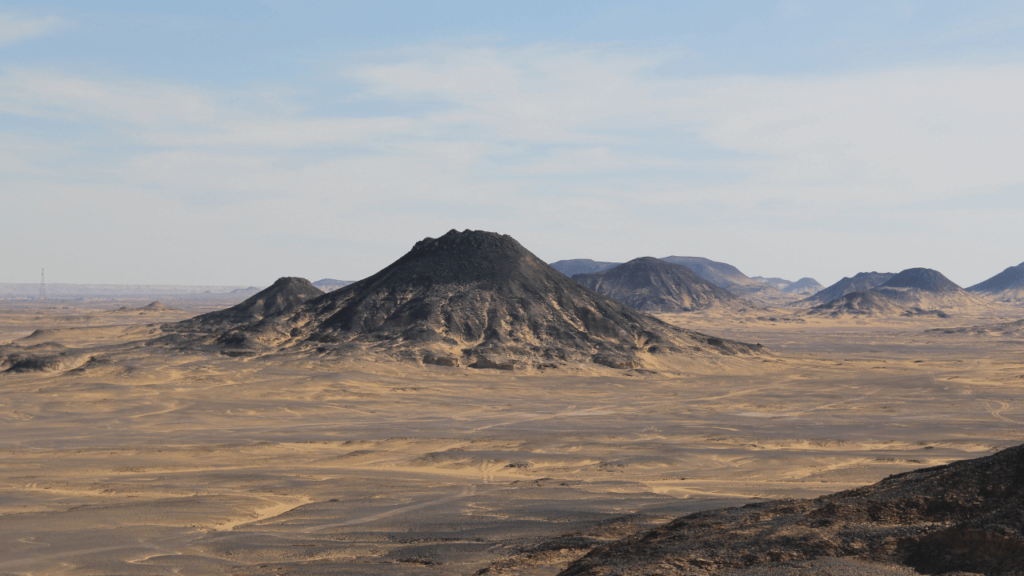
A short journey from the brooding allure of the Black Desert is the Crystal Mountain, a marvel that seems out of a fantasy tale. Known as a “jewel” in the heart of the desert, this natural formation is studded with countless quartz crystals that glint under the harsh sun. The mountain isn’t grand in size, but it’s the intricate detail of sparkling crystals formed over millennia that captivates all who visit here. Some crystals are clear and sharp, while others wear a coat of dust, yet each one contributes to the mountain’s unique shimmer.
While both the Black Desert and Crystal Mountain offer profound experiences, travelers should remember that they are in a fragile environment. Crystal Mountain, particularly, has faced issues due to visitors removing crystals as souvenirs. It’s vital to look at and admire this geological masterpiece but not disturb it. By preserving the integrity of these sites, we ensure that they continue to inspire awe and wonder in those who visit them in the years to come.
Enjoy camping under the stars in the White Desert.
Camping in the White Desert is an ethereal experience. As night falls, the landscape transforms, the rock formations becoming ghostly silhouettes against a star-blanketed sky. The Milky Way plays in full glory with no artificial light, stars twinkling with uninhibited brilliance. The silence is profound, broken only by the soft whispers of the desert wind. Wrapped in the tranquility, time seems to pause, making you keenly aware of the vastness of the universe and the serenity of untouched nature. But remember, this delicate environment is a privilege to explore; leave no trace behind, ensuring this celestial view remains pristine for future stargazers.
Best Time to go on the White Desert And Bahariya Oasis tour
October through April. During these months, the temperatures are more tolerable during the day and not extremely cold at night. Avoid the summer months (May to September) when temperatures can be scorching.
Duration: Typically 2 days/1 night.
Great Sand Sea and Siwa Oasis Expedition
This is an exhilarating journey to the Great Sand Sea and Siwa Oasis, an expedition that promises both thrills and tranquility. The Great Sand Sea, with its monumental dunes stretching to the horizon, offers a raw adventure. Here, the dunes create an ever-changing landscape that’s both formidable and stunningly beautiful, providing the ultimate playground for dune bashing or serene sunsets that paint the sands in countless shades of amber.
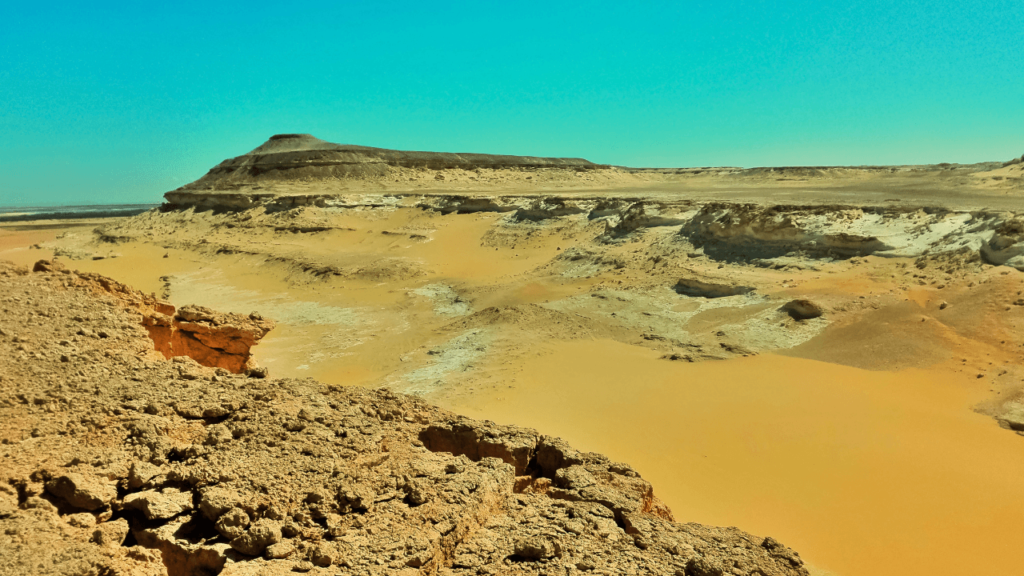
Contrastingly, the Siwa Oasis is a cultural gem hidden amidst the golden expanse, a whisper of greenery and life. It’s an escape from the desert’s harshness and a journey back in time, steeped in rich history and distinct traditions. Explore ancient relics like the Oracle of Amun, dip in Cleopatra’s Pool, and engage with the hospitable Siwans who have maintained their customs for centuries.
This expedition combines the sheer awe of vast, uninhabited spaces with the intimate experience of an enduring culture, making for an unforgettable journey through Egypt’s less-traveled paths. Remember, respecting the local customs and environment enriches your experience and preserves it for future explorers.
On this tour, you can see the following:
Experience the vast, seemingly endless dunes of the Great Sand Sea
Navigating the Great Sand Sea, you’re immediately struck by its sheer infinity. Towering dunes roll across the horizon in every direction, each a colossal wave of sand seemingly frozen in time. The silence here is absolute, the isolation complete, giving you the rare sensation of being the only person in this vast, undulating world.
For the adventurous, the dunes offer an unparalleled thrill. Dune bashing sends a rush of adrenaline as you ascend near-vertical slopes and slide down, the world tilting and spinning in a whirl of golden grains. Alternatively, sandboarding offers its unique excitement, akin to snowboarding but warmed by the sun’s rays.
As the day ends, the sunset on the Great Sand Sea is a spectacle beyond words. The lowering sun casts an ever-changing palette of colors, from rich golds to deep oranges, painting the sands in shades that defy imagination.
Travelers should be prepared: the desert’s moods vary with the time of day, and temperatures swing from intense heat to surprising cold. Adequate water, sun protection, and a reliable guide are indispensable in this beautiful but unforgiving landscape.
Explore the Siwa Oasis and its ancient relics, including the Oracle of Amun
In the heart of the desert, the Siwa Oasis emerges like a mirage, teeming with historical secrets and lush palm trees. With its clear springs and unique culture, this isolated paradise is a world away from Egypt’s typical tourist trails.
Your journey isn’t just about the refreshing shade or the chance to taste dates straight from the trees; it’s a dive into history. The Oracle of Amun, one of Siwa’s invaluable treasures, is a must-visit. Imagine yourself as Alexander the Great, who trekked across the perilous desert to consult the Oracle. Standing amidst the ruins, you can almost hear echoes of the past, whispers of prophecies that shaped empires.
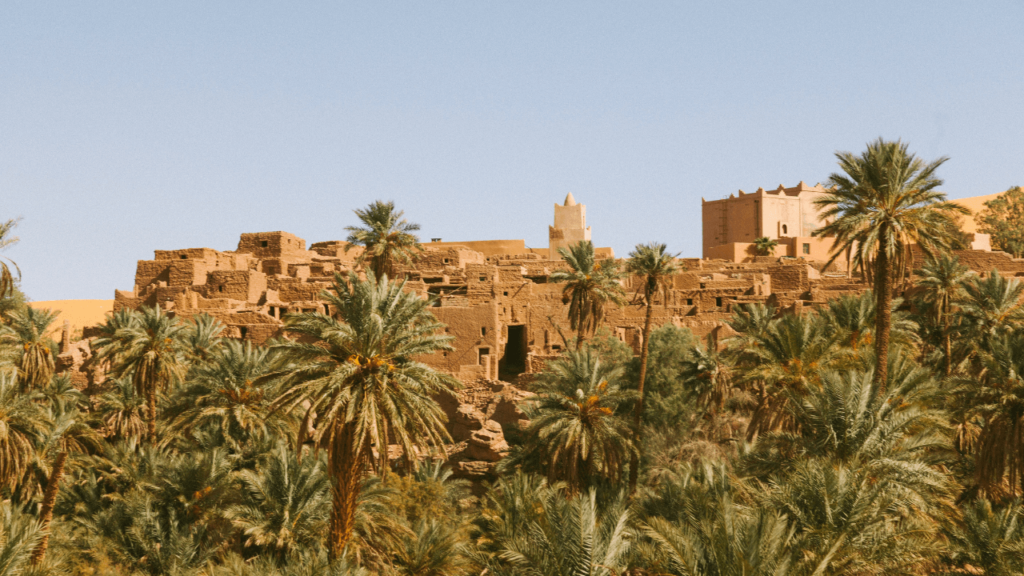
The relics in Siwa aren’t just stone and stories; they’re alive in the customs of the Siwans, whose distinct language and traditions have been preserved for centuries. While there, respect and curiosity are your gateways to heartwarming interactions with the locals.
Remember, Siwa’s remoteness demands thorough preparation. Reliable transportation, knowledge of local customs, and basic Arabic phrases enrich your experience. And while you’re immersed in Siwa’s charm, be mindful of preserving its cultural heritage and natural beauty.
Engage in dune bashing or sandboarding.
In the midst of the desert’s overwhelming tranquility, the thrill of dune bashing and sandboarding injects a surge of adrenaline into the experience. Picture yourself in a 4×4, heart racing as you ascend the steep face of a mammoth dune and then hold on tight during the stomach-dropping descent on the other side. The vehicle’s engine roars defiance against the desert’s silence, and the excitement is palpable.
For those preferring a board to wheels, sandboarding offers its own unique rush. Strap in at the peak of a dune, and then push off, balancing and carving your way down the shifting, sandy slope. It’s a test of skill and nerve, with the desert winds whipping around you and every bump and turn unpredictable.
These activities, while exhilarating, demand respect for the desert. Ensure you’re with a reputable tour group that follows safety protocols and protects the environment. The desert’s vastness can be disorienting, and the sands are unforgiving to the unprepared. Adequate hydration, sun protection, and respect for designated activity areas are crucial for a thrilling yet safe adventure. Remember, your tracks might be temporary, but your impact on the environment doesn’t have to be.
Relax in the salt lakes of Siwa
After the exhilarating rush of desert adventures, the salt lakes of Siwa offer a soothing respite. Siwa Oasis is home to several salt lakes and pools. The water in these pools is 95% salt, so it’s impossible to sink. It has properties that are often compared to those of the Dead Sea. The high concentration of minerals and salts in these bodies of water is believed to have various health benefits, including improving skin conditions and easing rheumatic ailments. The buoyancy created by the salt content allows for effortless floating, which is a unique and relaxing experience that many travelers seek out.

Amazing experience. Do Not miss out. After that, go to Cleopatra’s pool.
Cleopatra’s Pool, one of the most famous springs, is more than just a place for tranquility; it’s a dip into history. As you ease into waters once graced by royalty, it’s easy to feel a connection to the past. The spring’s enduring warmth provides comfort, a gentle reminder of the timelessness of this remote oasis.
While indulging in this restorative experience, it’s important to maintain respect for the site. Keep the environment pristine by not using soaps or oils in the water, and be mindful of local customs regarding swimwear. Siwa remains an unspoiled haven due to its cultural respect and ecological mindfulness; as visitors, it’s our responsibility to ensure it remains that way. Embrace the healing properties of Siwa’s springs, but leave only ripples and take away memories.
Best Time to go on the Great Sea And Siwa Oasis Expedition
October to April. Similar to the White Desert, this period offers more moderate temperatures. Siwa Oasis also has various cultural festivals throughout the year that may be of interest, such as the Siyaha Festival, typically in October.
Duration: Usually 4-5 days due to the remote location.
Sinai Peninsula Bedouin Adventure
The Sinai Peninsula Bedouin Adventure is a unique journey into the heart of Bedouin life. This isn’t just a scenic detour but a cultural immersion. As you traverse majestic mountains and vast deserts, you’re invited not just as a tourist but as an honored guest into a world where hospitality is a way of life.
Ride camels across ancient trails, share hearty meals, and listen to stories that have journeyed through generations, all under a vast sky untouched by city lights. Visit monumental sites like Saint Catherine’s Monastery and the awe-inspiring Colored Canyon, each steeped in history and splendor.
Respect for Bedouin customs is essential, as their traditions are the soul of this adventure. It’s more than a trip; it’s an intimate experience, bridging you to the essence of nomadic life. Remember, in the Sinai, every journey tells a story.
Here is what to do and see on this Bedouin Adventure:
Trekking to Mount Sinai
Trekking to Mount Sinai is a transformative journey that connects you to the breathtaking natural beauty of the Sinai Peninsula and a profound historical and spiritual legacy. Known as ‘Gebel Musa’ in Arabic, meaning the ‘Mountain of Moses,’ this peak holds a special place in the hearts of many faiths as the site where Moses is believed to have received the Ten Commandments.
The trek to Mount Sinai’s summit is both a physical and spiritual adventure. There are two main routes: the longer, gentler Camel Path and the more direct but steeper Steps of Repentance. As you ascend, the landscape unfolds dramatically, with rugged terrain and panoramic views that stretch across the desert. The climb, though challenging, is doable for those with a reasonable level of fitness, and the reward at the summit is nothing short of breathtaking.

Many pilgrims and adventurers climb at night, reaching the summit just in time to witness one of the most spectacular sunrises. The sky, painted in hues of orange, pink, and gold, illuminates the desert and mountains below, creating a moment of awe and tranquility.
While trekking, it’s important to be prepared. Wear comfortable walking shoes, carry water and snacks, and dress in layers as temperatures can fluctuate. Engaging a local Bedouin guide ensures safety and enriches the experience as they share insights about the mountain’s significance and the surrounding environment.
At the summit, take a moment to reflect, whether you’re there for religious reasons, personal reflection, or to embrace the majestic beauty of nature.
Camel trekking with Bedouin guides
Camel trekking with Bedouin guides is an unforgettable journey through the heart of the Sinai. As your camel sways gently, navigating the desert’s rhythm, you’re transported to a simpler time, where the desert was a canvas for the nomadic lifestyle. With their unparalleled knowledge of the desert, your Bedouin guides narrate the landscape around you, each dune and canyon holding a story of their ancestors.
The experience is profound yet practical; camels, known as the ‘ships of the desert,’ offer a comfortable ride, though it might take a moment to find your balance and get accustomed to the gait. Heeding your guide’s advice on mounting and sitting can make all the difference to your comfort.
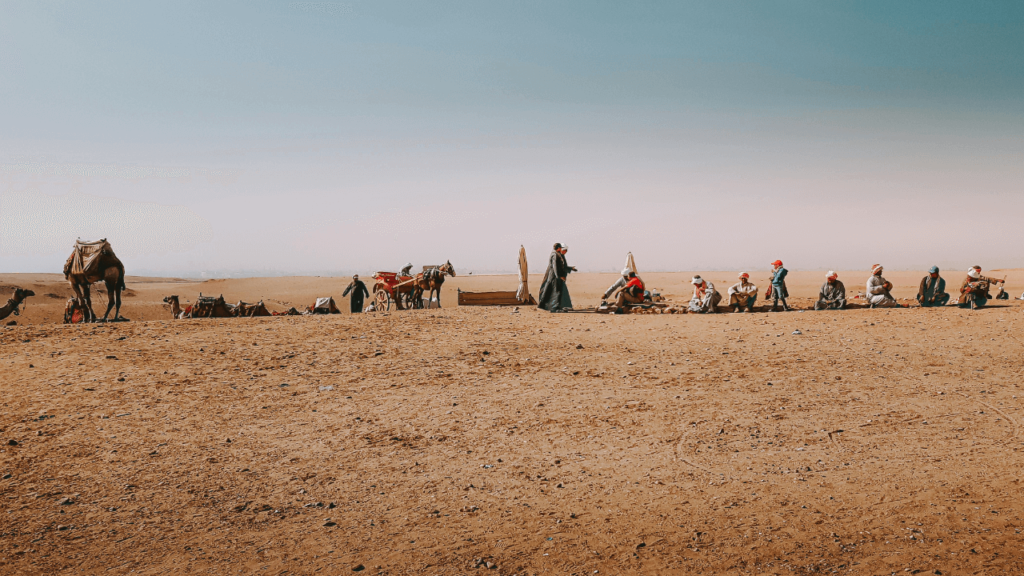
As the journey unfolds, the desert reveals its hidden treasures — from a sudden splash of green in an oasis to the mystical hues of a setting sun. Evenings are magical, with the aroma of traditional Bedouin cuisine around a campfire and nights spent under a starlit sky.
Remember, respect for the guides and their camels is paramount. Pack light, stay hydrated, protect yourself from the sun, and be ready for temperature drops at night. This trek is not just about reaching a destination; it’s about understanding the Bedouin way of life and the secrets of the Sinai.
Visit historic sites like Saint Catherine’s Monastery
Visiting Saint Catherine’s Monastery is a journey through living history, a chance to stand in a place that has been a center of faith for over a millennium. Nestled at the foot of Mount Sinai, where Moses is believed to have received the Ten Commandments, this Orthodox monastery is one of the oldest working Christian monasteries in the world.
Walking through the fortified walls, you’re greeted by an air of solemnity and peace. The Monastery is home to a stunning collection of religious iconography, ancient manuscripts, and a library rich with pivotal Christian texts. Standing within the compound, the Burning Bush is a profound sight, purported to be the descendant of the one through which God spoke to Moses.
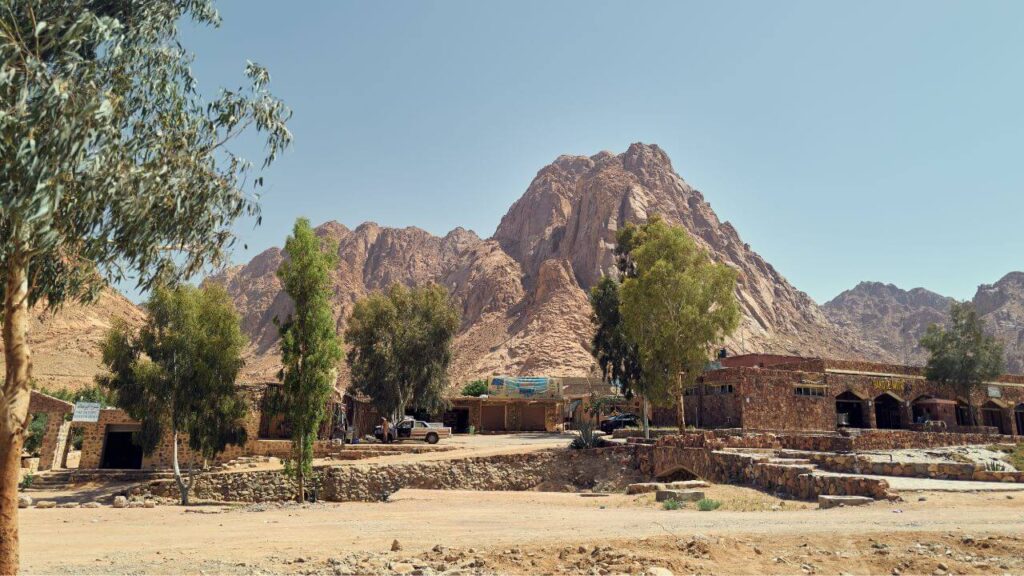
While soaking in the spiritual ambiance, respecting the sacred nature of Saint Catherine’s is crucial. Dress modestly, covering shoulders and legs, and speak softly, acknowledging the monks’ ongoing vow of silence. Photography may be restricted within certain holy areas.
The monastery is a significant pilgrimage site, so it can get crowded, especially during religious holidays. Early morning visits are recommended for a more contemplative experience. Also, remember the remote location — ensure you have arranged transportation and accommodations in advance. This spiritual enclave in the desert is not just a site seen, but a reverent experience felt deeply.
Explore the Colored Canyon and its remarkable hues
Exploring the Colored Canyon is like stepping into a painting where nature’s palette bursts with an array of vivid hues. This narrow gorge, carved through the mountains, offers a kaleidoscope of colors, the result of mineral-rich rocks and the unique geology of the Sinai Peninsula.
The journey through the canyon is an adventurer’s paradise — expect to walk, clamber, and sometimes slide through narrow passageways. The walls, smooth from the winds and waters of ages past, display layers of color ranging from deep ochre to rich magenta, a stunning natural gallery.
Preparation is key to fully enjoying the spectacle. Wear sturdy shoes suitable for uneven terrain, and bring water, sun protection, and a light jacket for the cooler shaded areas. While the hike isn’t excessively strenuous, it requires a moderate level of fitness and agility.
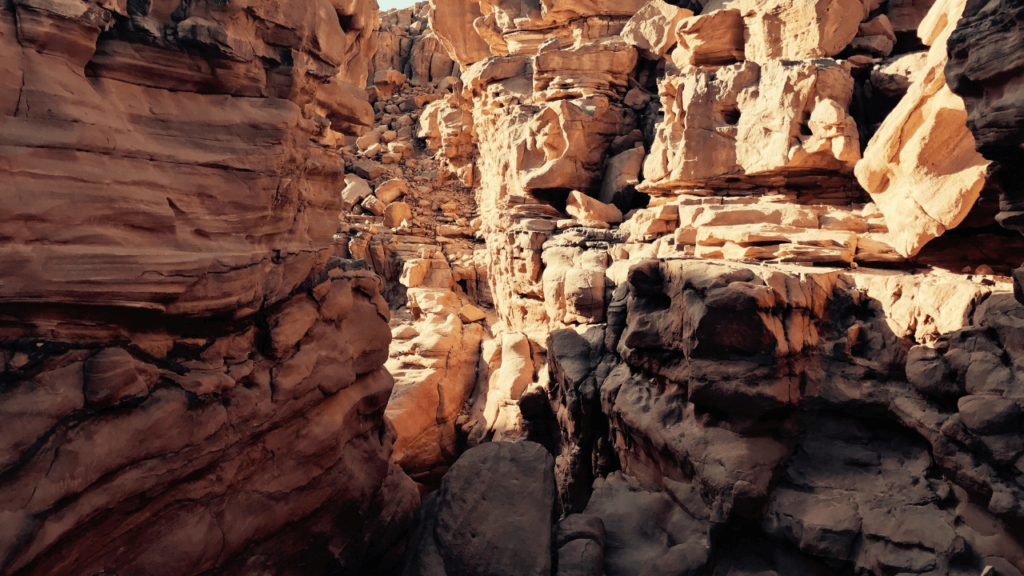
It’s highly recommended to explore the canyon with a local guide. Not only can the pathways be a labyrinth to the uninitiated, but the guides also share invaluable insights about the canyon’s formation and history.
Respect the environment during your visit — avoid littering and stick to the established paths to preserve this natural wonder. The Colored Canyon is more than a visual feast; it’s a testament to the dynamic forces that shape our earth, hidden away in the desert’s heart.
Experience Bedouin life and traditional cuisine
Experiencing Bedouin life is an immersion into a rich cultural tapestry woven with simple pleasures, ancient traditions, and a deep sense of community. Far from the bustle of city life, the desert’s rhythm dictates a lifestyle that has remained largely unchanged for centuries.
A day in the life of a Bedouin might involve tending to livestock, weaving, or sharing tales passed down through generations. As a visitor, you’ll be welcomed with the warm hospitality that’s a hallmark of Bedouin culture. Expect to be greeted with “Ahlan wa Sahlan,” meaning you’re like a family, and your arrival is celebrated.

One of the highlights of this cultural immersion is the traditional cuisine. Meals are not just food but a communal event, a time to gather and share. You may be offered a cup of strong, aromatic coffee or herbal tea, symbols of hospitality. Common dishes you’ll encounter include ‘Zarb’ — a variety of meats and vegetables slow-cooked in an underground sand oven, giving them a distinctive smoky flavor.
Remember, meals are taken seriously, and there are customs to observe. Always accept food or drink with your right hand, and it’s polite to sample everything offered. Sharing a meal means you’re not just a guest; you become part of the Bedouin family, if only for a fleeting moment. This experience is a chance to slow down, appreciate the simpler things, and connect with a culture rooted in the sands of time.
Best Time to Go on the Sinai Peninsula
The cooler months from September to November and March to May are ideal for visiting the Sinai Peninsula. Winters (December to February) can be cold, especially in the mountainous regions, and summers (June to August) are generally very hot.
Duration: 2-3 days.
Eastern Desert Safari with Red Sea Relaxation
The Eastern Desert Safari offers an intriguing blend of adventure and tranquility. Your journey begins with a foray into the Eastern Desert, a lesser-traveled expanse that hides archaeological gems and echoes of the Pharaonic and Roman eras. Navigating its arid landscapes, you may encounter remnants of ancient mining operations and carvings, testimony to the area’s bustling past.
However, the stark contrast between the austere desert and the Red Sea’s azure waters captivates most. After the adrenaline of the desert safari, the Red Sea’s coastline feels like a different world. Here, relaxation is your only goal. The area is famed for its luxurious resorts, pristine beaches, and vibrant marine life. Rejuvenation is guaranteed if you prefer to unwind on the beach, indulge in a spa treatment, or explore the underwater wonders through snorkeling or diving.
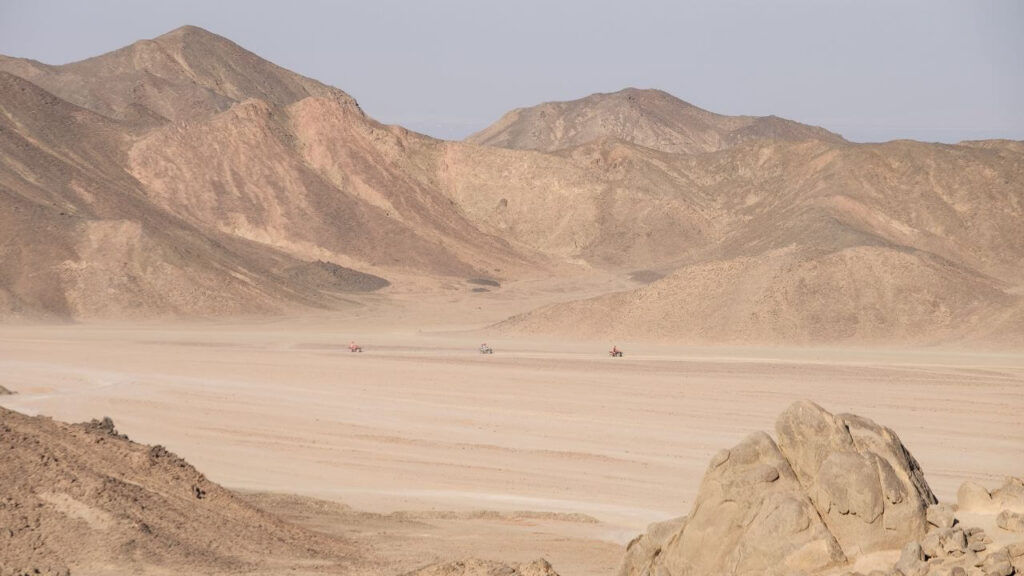
For a seamless experience, pack both adventure gear and leisure essentials. Respect historical sites, and remember conservation practices if diving or snorkeling, ensuring the delicate marine ecosystems are preserved. This dual-experience tour beautifully balances the thrill of exploration with the serenity of sea-side relaxation, encapsulating Egypt’s diverse splendors.
Discover ancient Roman ruins and prehistoric rock art
Venturing into the Eastern Desert, you’re stepping into a vast, open-air museum where history whispers from the sands. Ancient Roman ruins tell tales of conquests and life in remote outposts of a mighty empire. Structures, though time-worn, stand as monuments to the past, from crumbling fortresses guarding long-forgotten trade routes to stone quarries and abandoned settlements. Each site, while often stark, has a unique story to tell.
Equally mesmerizing is the prehistoric rock art adorning the desert’s caves and rocky plains. These drawings, etched into stone, provide a rare glimpse into the lives of ancient inhabitants, depicting scenes of hunting, dancing, and daily life. These images bridge millennia, connecting us to individuals who lived and thrived in these landscapes.
When exploring these sites, a knowledgeable guide is invaluable for navigating and unraveling each location’s rich tapestry of history. Wear appropriate footwear for uneven terrain and pack water, sun protection, and a camera to capture the sites.
While these remnants of antiquity might seem steadfast, they’re vulnerable to the elements and human activity. Respecting these sites is crucial: don’t touch the rock art, and follow established paths. Visiting these ancient locales isn’t just sightseeing; it’s a pilgrimage through time.
Engage in off-road adventures across rugged terrain
Embarking on an off-road adventure in Egypt’s Eastern Desert is an exhilarating experience that plunges you into a seemingly boundless panorama of golden sands, rugged mountains, and hidden valleys. The terrain here is a mosaic of challenges, making it an ideal playground for off-road enthusiasts.
As your vehicle plunges into valleys and ascends dunes, you’ll feel the thrill of confronting the desert’s raw power. The landscape is unpredictable and demands respect; one moment, you’re navigating through narrow canyons, and the next, you’re maneuvering steep, rocky outcrops. Every turn can reveal a surprising new vista, from a sudden bloom of desert flora to a herd of gazelles sprinting across the horizon.
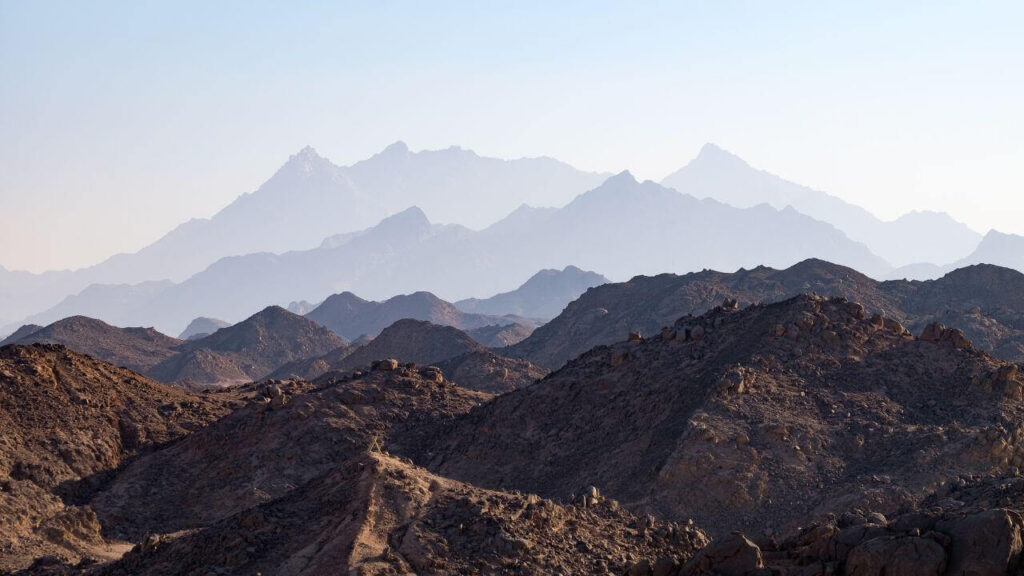
For such adventures, preparation is paramount. If possible, it’s essential to journey with experienced guides and in a convoy, as the Eastern Desert’s beauty is matched by its remoteness and potential hazards. Ensure your vehicle is equipped for tough conditions and that you have supplies, such as water, food, and first-aid essentials. Communication tools are crucial due to the limited cell service in remote areas.
Remember, the desert is as delicate as it is vast. Stick to established tracks to minimize environmental impact and never disturb wildlife. This journey offers not just a rush of adrenaline but also a profound connection with the untamed heart of the desert.
End the tour with relaxation at a Red Sea resort
After days of dusty trails and the intense thrills of the Eastern Desert, ending your tour at a Red Sea resort is the perfect finale. Transitioning from the stark, sunbaked wilderness to the soothing ambiance of a seaside retreat is a sensory delight. The Red Sea is famed for its crystal-clear waters, vibrant coral reefs, and a shoreline dotted with world-class resorts catering to every whim and desire.
Here, you can wash off the desert’s grit and relax. Whether you lounge on the soft sandy beaches, indulge in rejuvenating spa treatments, or dine on gourmet meals with the sea as your backdrop, the resort is your oasis of luxury. The sea itself beckons for exploration, with snorkeling and diving offering glimpses of the colorful underwater tapestry of marine life.

For travelers, it’s essential to book your resort stay in advance, especially in peak seasons, to secure your spot in paradise. While the resort will provide most amenities, remember to bring essentials like sunscreen, swimwear, and a good book for beachside relaxation.
This seamless shift from adventure to leisure underscores the diversity of the Egyptian travel experience, ensuring you return from your journey with a balanced blend of excitement, discovery, and serene relaxation.
Opt for snorkeling or diving to explore the Red Sea’s renowned marine life
The Red Sea’s calm, clear waters are a diver’s paradise, known worldwide for their vibrant coral gardens and diverse marine life. Whether snorkeling or diving, you’re in for a visual feast.
Snorkeling is a fantastic way to acquaint yourself with the Red Sea’s underwater marvels. Just beneath the surface, you’ll find yourself surrounded by schools of colorful fish, with coral reefs that are teeming with life and bursting with color. It’s accessible to everyone, even those without prior experience.
For a deeper plunge, scuba diving opens up even more of the underwater world. You might explore dramatic wall-drop shipwrecks and encounter larger species like dolphins or turtles. The Red Sea’s warm waters and high salinity also offer excellent buoyancy, making it an ideal spot for beginners while still offering unique sites that experienced divers will appreciate.
Before diving in, choosing a certified and reputable operator is essential, ensuring safety and adherence to ecological guidelines. Respect for the marine environment is crucial: be mindful of your movements to avoid damaging the coral reefs, never touch or take marine life, and refrain from using harmful sunscreens.
Exploring the Red Sea’s underwater world is more than an activity; it’s an immersion into a vibrant ecosystem that will leave you with unforgettable memories.
The best time to go on the Journey at Eastern Desert Safari
Late September to November and February to April. The weather during these periods is warm but not uncomfortably hot, making it suitable for both desert exploration and marine activities in the Red Sea.
Duration: 3-4 days.
Luxor to Kharga Oasis and Dakhla Oasis Trip
The journey from Luxor to the Kharga and Dakhla Oases is a passage through time, leading you from the grandeur of ancient temples to the serene, life-giving havens in the Western Desert. As you venture from Luxor’s monumental relics, the landscape unfolds into an ocean of sand, revealing the precious oases of Kharga and Dakhla.
Kharga welcomes you with its whispering palm trees and historical gems like the Temple of Hibis, a reminder of the area’s rich past under various empires. On the other hand, Dakhla is a blend of old and new, where age-old mud-brick villages meet the comforts of modernity.
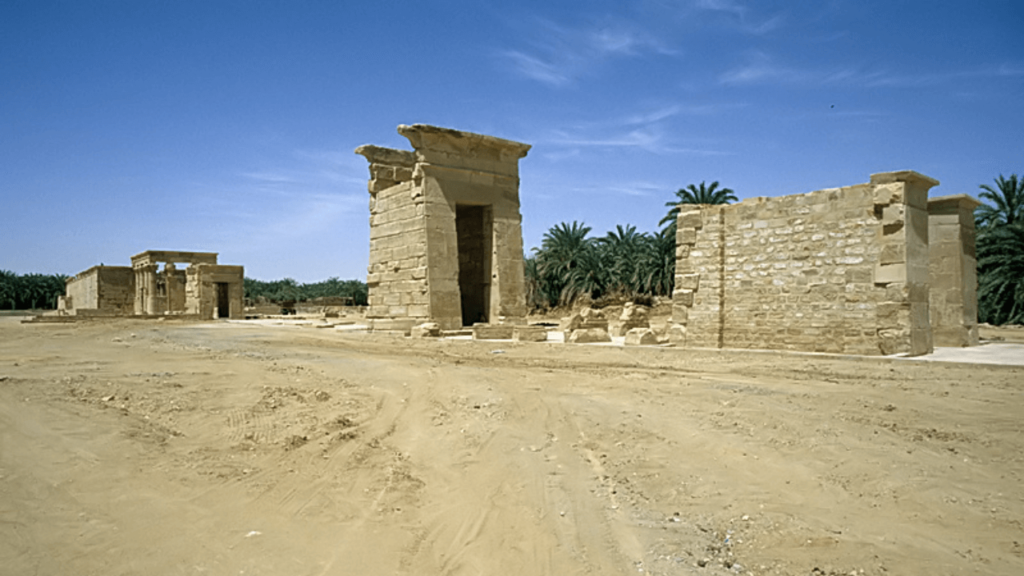
Photo source: Wikipedia
Prepare for significant temperature shifts between day and night, and carry essentials like sun protection, hydration, and comfortable clothing. While the oases will provide basic amenities, it’s the isolation amidst the dunes that truly captivates. However, this remoteness also means limited medical facilities, making health precautions vital.
Traveling with a reputable guide is key for navigation and invaluable insights into these unique environments’ history, culture, and geology. This trip isn’t just a physical journey but a leap into the enduring heart of Egypt.
Visit the Temple of Hibis in Kharga and the historic Muzawaka Tombs in Dakhla.
Venturing into the Kharga Oasis, the Temple of Hibis is a sentinel of ancient history amidst the desert landscape. This temple, the largest and most well-preserved in the Western Desert, dates back to the Persian period and showcases a fascinating fusion of Egyptian and Persian cultures. As you wander its corridors, intricate hieroglyphic inscriptions and vivid murals reveal tales of deities and pharaohs, immersing you in an ancient world. Remember, a guide can enrich your experience, offering insights into the temple’s storied past and its architectural marvels.
A journey to Dakhla is incomplete without beholding the Muzawaka Tombs. These tombs, carved into the cliffside, are a testament to the area’s Greco-Roman era. Though eroded by time, the vibrantly painted walls still depict scenes of daily life and the afterlife, providing a poignant connection to the individuals who once resided in this desert realm. While photography is often allowed, it’s crucial to respect these ancient sites, and flash photography is usually prohibited to preserve the remaining colors.
As these sites are in remote locations, ensure you’re equipped with necessities like water, appropriate footwear, and headgear for sun protection. Engaging with local guides supports the community and unlocks hidden stories behind these historical treasures.
Explore the unique cultural heritage and architecture of Dakhla Oasis
Dakhla Oasis, a tranquil haven set amid the vast expanse of the Western Desert, offers travelers a unique glimpse into Egypt’s rich cultural tapestry. The oasis is a world unto itself, featuring verdant palm groves and picturesque villages that seem to defy the arid desert surroundings.
One architectural marvel not to miss is the Deir El-Hagar Temple, a sandstone adorned with inscriptions, and the restored Roman-era mud-brick town of Balat. The ancient village of Al-Qasr, with its labyrinthine passageways, showcases Islamic architecture that has stood the test of time, offering a rare peek into life centuries ago.
Travelers should wear comfortable shoes suitable for walking over uneven surfaces, as exploring the best of Dakhla often involves traversing through ancient sites. Carry water to stay hydrated and respect local customs and traditions, especially when visiting religious sites.
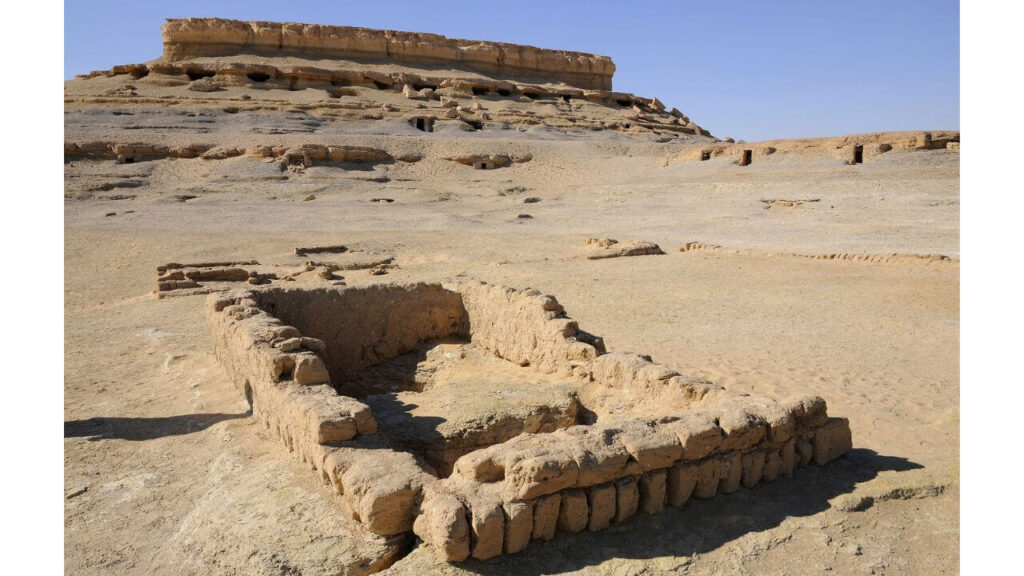
Photo source: global-geography.org
Hiring a local guide enhances the experience; they provide invaluable insights into the historical context and significance of the sites you’ll visit. Their locale knowledge can also lead you to hidden gems not commonly found in guidebooks. The past and present converge in Dakhla, offering a unique, unforgettable journey into Egypt’s cultural heritage.
Enjoy the serene landscapes and tranquility of the desert
Amidst the vast, sweeping dunes of the Egyptian desert, profound tranquility must be experienced to be understood. As the relentless pace of modern life recedes, travelers find themselves enveloped in an almost tangible silence, the serene landscapes stretching out unbroken under the vast sky.
The gentle curves of the sand, which change color with the progressing day, from rich golds in the full sun to muted oranges and pinks at dusk and dawn, present an ever-changing artwork crafted by nature itself. Night ushers in its own majesty as the clear, unpolluted skies come alive with a sea of stars, offering a celestial spectacle that has mesmerized humanity since the dawn of time.
This environment inspires introspection and a unique connection with the natural world. However, travelers must be prepared: the desert, while beautiful, is also an extreme environment. Necessary supplies include plenty of water, sun protection like hats and sunscreen, appropriate clothing, and provisions for sudden temperature drops during the night.
Moreover, while embracing the quietude, travelers should remain aware of their surroundings, stick close to their group or guide, and respect the pristine nature of the environment, leaving no trace behind. This experience, ethereal and unforgettable, is a gentle reminder of our small yet significant place within the grandeur of the natural world.
Opportunity to extend the trip with a visit to the other oases like Farafra
The adventure doesn’t have to end at Dakhla and Kharga; the Western Desert of Egypt is dotted with a chain of oases, each offering its unique blend of history, culture, and natural beauty, and you have the opportunity to extend your journey to include these stunning locales.
Farafra, known for its White Desert, is a surreal landscape where colossal chalk formations create a snow-like vista that glows under the moonlight. A night here is an ethereal experience, with the silence and the stark, otherworldly beauty providing a deep sense of tranquility. The desert can be cool at night, so warm clothing is advisable.

Traveling between oases might require long drives through desolate areas, so ensure your transport is reliable and you’re stocked with essentials like water and snacks. Also, a knowledgeable guide is invaluable, providing insights into each area’s unique history and assisting with communication in these remote regions.
Each oasis features its own unique charm and character, making an extended trip a fantastic way to immerse yourself more deeply in the secrets and serene beauty of Egypt’s deserts.
The best time to go to Kharga Oasis and Dakha Oasis
October to February. This period avoids the peak summer temperatures that can make the desert unbearable. Additionally, traveling during these months allows tourists to explore archaeological sites in more pleasant conditions.
Duration: 3-4 days.
What to pack for Desert Safari In Egypt
Essential Clothing:
- Lightweight, breathable clothing (long-sleeved shirts and pants for sun protection).
- A jacket or sweater for the cold desert nights.
- Comfortable walking shoes or boots with a good grip.
- Sandals for walking around camp or in the sand.
- A hat with a wide brim for sun protection.
- A scarf or neck gaiter for face protection against dust and sand.
- Sunglasses with UV protection.
Personal Items:
- Sunscreen with high SPF.
- Lip balm with SPF.
- Moisturizer (the desert can be very dry).
- Hand sanitizer and wet wipes.
- Personal toiletries (preferably biodegradable to reduce environmental impact).
- Insect repellent.
- Personal medications and a small first aid kit.
- Reusable water bottles or hydration systems.
- High-energy snacks (like nuts or energy bars).

Gear and Equipment:
- Backpack or daypack.
- Headlamp or flashlight with extra batteries.
- Camera with protective case, memory cards, and extra batteries/charger.
- Binoculars for wildlife or scenic viewing (optional).
- Sleeping bag or travel sheet (if camping and not provided by the tour).
- Travel pillow or inflatable pillow for comfort.
- A lightweight blanket or travel towel.
Essential Documents and Miscellaneous:
- Passport/ID and photocopies of important documents.
- Travel insurance information.
- Emergency contact information.
- Cash and credit/debit cards (keep in mind remote areas may not have ATM facilities).
- A small notebook and pen for journaling or notes.
- Multi-tool or Swiss Army knife (check with airline policy if flying).
- Portable power bank for electronic devices.
- Maps or a GPS device if you’re going on a self-guided tour.
- Lightweight, collapsible trekking poles (if planning to do extensive hiking).
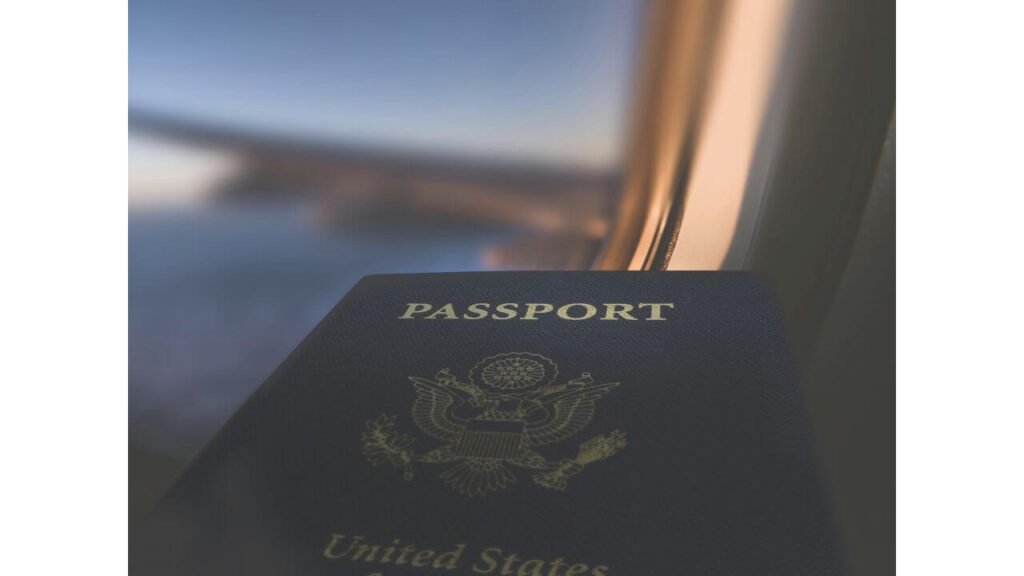
Cultural Sensitivity Items:
- Modest clothing (if your trip includes visits to local villages or religious sites).
- Small gifts or souvenirs from your home country (if you plan to interact with local communities).
Here, we have a complete packing guide for Egypt.
Final words
These top 5 Desert Safari Sites in Egypt offer a mix of adventure, cultural insights, historical exploration, and natural beauty, each providing a unique way to experience the deserts of Egypt. They usually include transportation, guides, meals, and camping arrangements or accommodations. Always consider booking through a reputable operator and ensure the itinerary suits your interests and physical capabilities.
What is the best time to go?
The common theme is that the cooler months, which fall between October and April, are the most comfortable for desert tours in Egypt. However, it’s essential to note that “cooler” is relative, and daytime temperatures can still be warm, especially in direct sunlight. Regardless of when you visit, proper sun protection and hydration are crucial. Also, desert temperatures can drop significantly at night, so warm clothing is necessary for evening activities or overnight stays.


